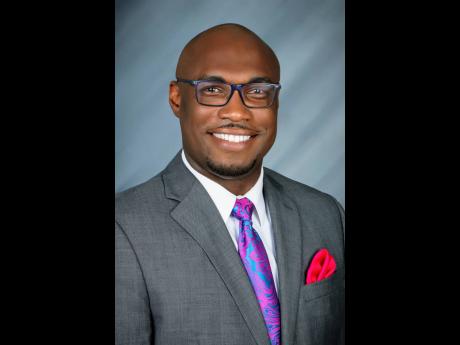Darien Henry | Too risky to reopen schools for face-to-face teaching
I am not aware of a single school administrator in Jamaica who would not welcome a full-scale reopening of schools for face-to-face instruction. But coronavirus has been teaching us many lessons about adaptation, resilience, and making virtuous choices.
The United Nations described COVID-19 pandemic as fashioning “the largest disruption of education systems in history,” distressing nearly 1.6 billion students in over 190 countries. Some 94 per cent of the world’s student population has been impacted and in low- and middle-income countries, 99 per cent of students have been affected. What is important, though, and has been validated by Human Rights Watch, is that school closures caused by the pandemic have exacerbated previously existing educational inequality.
We are pivoting at an important point in history, and a generation of young people have been stuck in a rut largely caused by COVID-19 pandemic.
Jamaica, while nowhere near the pinnacle of coronavirus infections, has been inching upwards on the world ranking of COVID-19, with the positive cases reaching over 5,000. While the State has deployed protocols and resources to tackle the pandemic, Jamaica has entered full-blown community spread, six months after the first single case was reported.
The Ministry of Education, Youth and Information’s press release issued on Friday, September 18, titled: ‘Phased reopening of schools to be guided by risk ranking’ is deeply bothersome and, in my considered view, sends an imprudent signal about administering public education in a time of crisis and could be at risk of flunking the test in managing pandemic pedagogy.
NOT THE RIGHT TIME
The ministry’s plan appears to be hemmed on ranking communities, protocol readiness, state of infrastructure, adequacy of staff, and quality of Internet connectivity to the planned, phased reopening of public schools. While I welcome the thrust of Minister Fayval Williams and State Minister Robert Morgan to crank up the state of readiness of the education system by setting up a task force of important educational stakeholders, the move to open for schools for face-to-face classes is dangerously risky and ill-advised at this time.
I cannot fathom the impulsion to open for face-to-face instructions, while many countries had to shut down their schools after the rise in COVID-19 cases.
Many school districts in the United States have decided to cancel face-to-face classes for the fall due to the risks imposed by COVID-19. According to Inside Higher Ed, “As many reopening plans were finalized, the coronavirus pandemic surged across the United States. Northeastern states, home to the first viral hotspots – including New Jersey and New York – have largely quelled their worst outbreaks, but case counts have spiked in the southern and southwestern states over the past month.”
New York Mayor Bill DeBlasio, who superintends the largest school district in the United States which caters to about one million students at the middle and high-school levels alone, has had to walk back plans for face-to-face teaching in September after school leaders barked back, concerned about the lack of health measures to protect teachers, students, and staff from the coronavirus.
Cases have been swelling in California and realising new peaks in Colorado, Louisiana, Washington and Wisconsin. Many colleges, too, that had planned to bring students back to campus for the fall semester have reversed course entirely and chosen online-only instruction.
Citing “new scientific evidence, as well as recent and troubling trends nationally and in Massachusetts,” days later, Mount Holyoke College in Massachusetts announced that it would not reopen for in-person instruction this fall. I cannot fathom the logic of opening the school system in the community spread phase of the pandemic, with daily triple- digit increase in new cases and the number of deaths averaging five cases daily.
PATENTLY MISGUIDED
While I appreciate using geographic information system (GIS) technology to evaluate schools in determining risk ranking, this approach, in my view, is patently misguided and is incongruent to the guidelines for reopening schools by the Centers for Disease Control and Prevention (CDC) in the US.
The agency was very clear that implementation of mitigation strategies for the safe reopening of schools must be guided by: (1) Consistent and correct use of masks; (2) Social distancing to the extent possible; (3) hand hygiene and respiratory etiquette, cleaning and disinfection; and, importantly, (4) Contact tracing, in collaboration with the local health department.
What is the likelihood of exposing staff and students to moderate to high risk of transmission in schools if only few of these guidelines are consistently followed? Do we have adequate staff in the school system to effectively monitor mitigation strategies to ensure very low risk?
In the scheme of things and local cultural norms, how can we rely on GIS mapping of schools to determine risk, when the very stakeholders being served are from the said community where COVID-19 cases are high. The reopening of schools for face-to-face instruction being promulgated by the Ministry of Education, Youth and Information has been silent on contact tracing as is provided for by the CDC guidelines.
Public transportation is vital to the public education system, and mass transit is likely a very important gateway for the transmission of the coronavirus.
We are assuming that people are using The Jamaica Urban Transit Company (JUTC) buses, and the assumption is confined to the Kingston Metropolitan Transport Region. Thousands of our students travel the snaking network of rural roadways, but many misguided and undisciplined persons have themselves to be blamed for the spread of the virus by not wearing masks and avoiding social distancing. Social distancing on public transport is patently impossible, let alone for our students. We should not be tasking this risk, especially when COVID-19 is in the community spread phase.
PROTECT TEACHERS
We must protect our teachers in the pandemic.
Recently, I completed a special training course in virtual instructional leadership, in which one of the biggest takeaways was the emphasis on leading with care – ‘Maslow before Bloom’, a psycho-educational concept that embraces the need for leading with care and compassion. I would like to call upon the honourable ministers to listen to voices from those who lead and manage our schools.
Leading with care means that our political leaders listen and make good judgements that protect the citizens and stakeholders. No doubt, the needs of our teachers and students must be met. The concerns about educational lag impacting our children are well noted, but that can be remedied by smart educational policies in the short to medium term.
However, it is way too risky to expose our staff and students while the spread of coronavirus ravages the country and our economy.
The school system should only be conditioned for remote-led instruction come October 5, and for the remainder of the term; and there should be meaningful face-to-face strategies explored, which will be feasible and workable for the January 2021 semester.
In Germany, for instance, school administrators have divided students into ‘cohorts’ of several hundred students. Cohorts are prohibited from mixing with one another and teachers are assigned to specific cohorts. The goal of the ‘cohort’ model is to prevent entire student bodies from needing to quarantine in the case of an outbreak. We are not short on models that we can explore for face-to-face instruction. But we need to plan! However, for the time being, remote learning does not only include online instruction which is synchronous, but educational programmes can be tailored creatively and smartly to meet the needs of our learners, while all stakeholders remain safe.
Schools should only be opened when the community spread of COVID-19 has dissipated and the risks significantly reduced. Now is not the time to be fancy with GIS mapping technology, but, instead, pivot the focus on optimal remote instruction and community outreach teaching – the smart use of radio and television and pre-recorded teaching modules – the safest and most equitable way possible, while re-examining all risk factors that can inform a safe reopening for face-to-face instruction.
Darien Henry is principal of Cumberland High School in Portmore, St Catherine.


